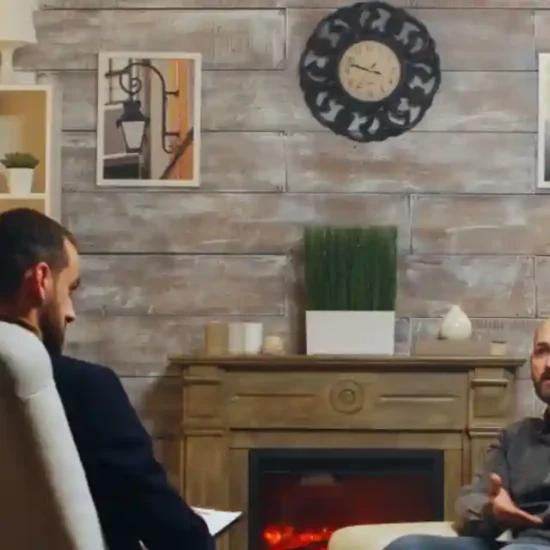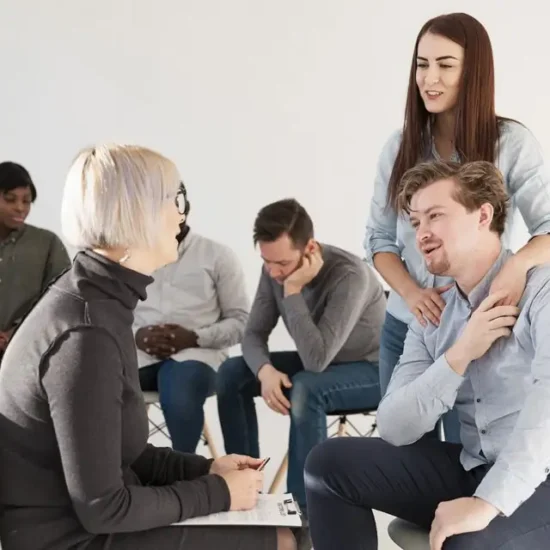Traditional talk therapy has been the mainstay for treating various mental health conditions. While highly effective, it can often be time-consuming, requiring multiple sessions over weeks or months.
Accelerated Resolution Therapy offers a potentially faster alternative. Developed by Laney Rosenzweig in 2008, ART aims to alleviate symptoms associated with trauma and other stressors in a shorter timeframe, typically 1-5 sessions.
What is accelerated resolution therapy?
Accelerated Resolution Therapy (ART) is a unique form of psychotherapy. It quickly and effectively treats trauma, depression, and stress-related conditions. ART helps individuals replace distressing memories with positive images. This is done through guided eye movements, often providing relief in just one session.
ART combines eye movements with established therapies like Gestalt and Guided Imagery. This allows for rapid and lasting changes without detailed discussions of the trauma. ART benefits various mental health issues. It offers a calming and empowering experience for clients and therapists alike.
How does accelerated resolution therapy work?
Accelerated Resolution Therapy (ART) is designed to treat psychological trauma and related conditions. It is based on the principles of eye movement desensitization and reprocessing (EMDR) but with some key differences. Here’s how it works:
- Eye Movements: During ART sessions, clients follow the therapist’s hand movements with their eyes. This bilateral eye movement is believed to help reprocess traumatic memories.
- Imagery Re-scripting: Clients are guided to visualize their traumatic memories and then change these images. This process helps to alter the emotional response to these memories.
- Voluntary Memory Replacement: Unlike other therapies, ART allows clients to replace distressing images with positive ones. This helps in reducing the emotional impact of traumatic memories.
- Rapid Results: ART is designed to be a short-term therapy. Many clients experience significant relief within 1-5 sessions.
- Non-Invasive: ART does not require clients to describe their trauma in detail. This makes it more comfortable for those who find talking about their experiences difficult.
- Scientific Basis: Research indicates that ART can be effective for PTSD, anxiety, depression, and other conditions. It helps rewire how the brain processes traumatic memories.
ART is a structured, client-centered approach that uses visualization and eye movements to resolve trauma quickly and effectively.
Who may benefit from accelerated resolution therapy?
Accelerated Resolution Therapy (ART) can benefit a wide range of people. Here are some key groups:
- Trauma Survivors: Individuals who have experienced traumatic events, such as accidents, assaults, or natural disasters, can benefit. ART helps reprocess and reduce the emotional impact of these memories.
- PTSD Patients: People with Post-Traumatic Stress Disorder (PTSD) can find relief through ART. It helps diminish symptoms like flashbacks, nightmares, and severe anxiety.
- Anxiety Sufferers: Those dealing with various anxiety disorders, including generalized anxiety disorder and social anxiety, can benefit. ART aids in managing and reducing anxiety levels.
- Depression Patients: ART can aid individuals with depression. By addressing underlying traumatic memories, ART can improve mood and reduce depressive symptoms.
- Victims of Abuse: People who have suffered physical, emotional, or sexual abuse can use ART to process and mitigate the lasting effects of their experiences.
- Military Personnel and Veterans: Many service members and veterans who experience combat-related trauma find ART helpful. It can address PTSD and other combat-related psychological issues.
- First Responders: Police officers, firefighters, and emergency medical personnel often encounter traumatic situations. ART can help them cope with these experiences.
- Individuals with Phobias: ART can assist those with specific phobias by helping to reframe and reduce fear responses.
ART’s versatility makes it useful for anyone dealing with trauma, anxiety, depression, and related conditions. Its non-invasive nature and rapid results are appealing to many seeking mental health support.
Accelerated resolution therapy for PTSD
Accelerated Resolution Therapy (ART) helps people with post-traumatic stress disorder (PTSD). It is a new therapy that combines different techniques from other therapies like eye movement desensitization and reprocessing (EMDR) and cognitive behavioral therapy (CBT).
ART sessions are short, usually between one to five sessions. In these sessions, patients think about their traumatic memories while following the therapist’s hand movements with their eyes. This helps change how the brain processes these memories, making them less upsetting.
A key benefit of ART is its focus on quick symptom relief. Many patients feel better after just a few sessions because ART helps them remember their traumatic experiences without the intense negative feelings.
ART also helps patients replace negative images with positive ones, giving them more control over their emotions. This therapy is gentle and doesn’t require patients to talk a lot about their trauma, making it easier for some people.
Studies indicate that ART can significantly reduce PTSD symptoms and enhance overall mental health for many patients.
FAQs
Q: How does ART compare to traditional talk therapy?
A: ART differs from traditional talk therapy by focusing on rapid symptom relief without requiring clients to talk extensively about their trauma. It uses eye movements and imagery re-scripting to achieve therapeutic outcomes more quickly.
Q: What conditions can ART treat effectively?
A: ART is effective for PTSD, anxiety, depression, and other stress-related conditions. Research indicates that it helps rewire how the brain processes traumatic memories.
Q: How is ART different from other therapies?
A: ART is based on the principles of EMDR but includes key differences such as voluntary memory replacement. Unlike other therapies, ART does not require clients to describe their trauma in detail, making it more comfortable for those who find talking about their experiences difficult.
Q: What should one expect during an ART session?
A: During an ART session, clients will follow the therapist’s hand movements with their eyes while visualizing their traumatic memories. They will be guided to alter these images in their mind, replacing distressing memories with positive ones. The process is structured and client-centered, aiming for rapid and lasting changes.
Conclusion
Accelerated Resolution Therapy (ART) offers a promising alternative to traditional talk therapy for treating various mental health conditions, including trauma, PTSD, anxiety, and depression. By leveraging guided eye movements and imagery re-scripting, ART allows clients to reprocess distressing memories quickly and effectively, often within 1-5 sessions.
This innovative approach combines elements of established therapies to achieve rapid symptom relief without requiring detailed discussions of traumatic experiences. ART’s non-invasive approach and focus on voluntary memory replacement make it a comfortable and empowering option for many, including trauma survivors, military personnel, first responders, and those with phobias.
As research continues to support its efficacy, ART stands out as a versatile and efficient therapeutic option for those seeking mental health support. Take the first step towards healing with BHouses and explore the benefits of ART today.










